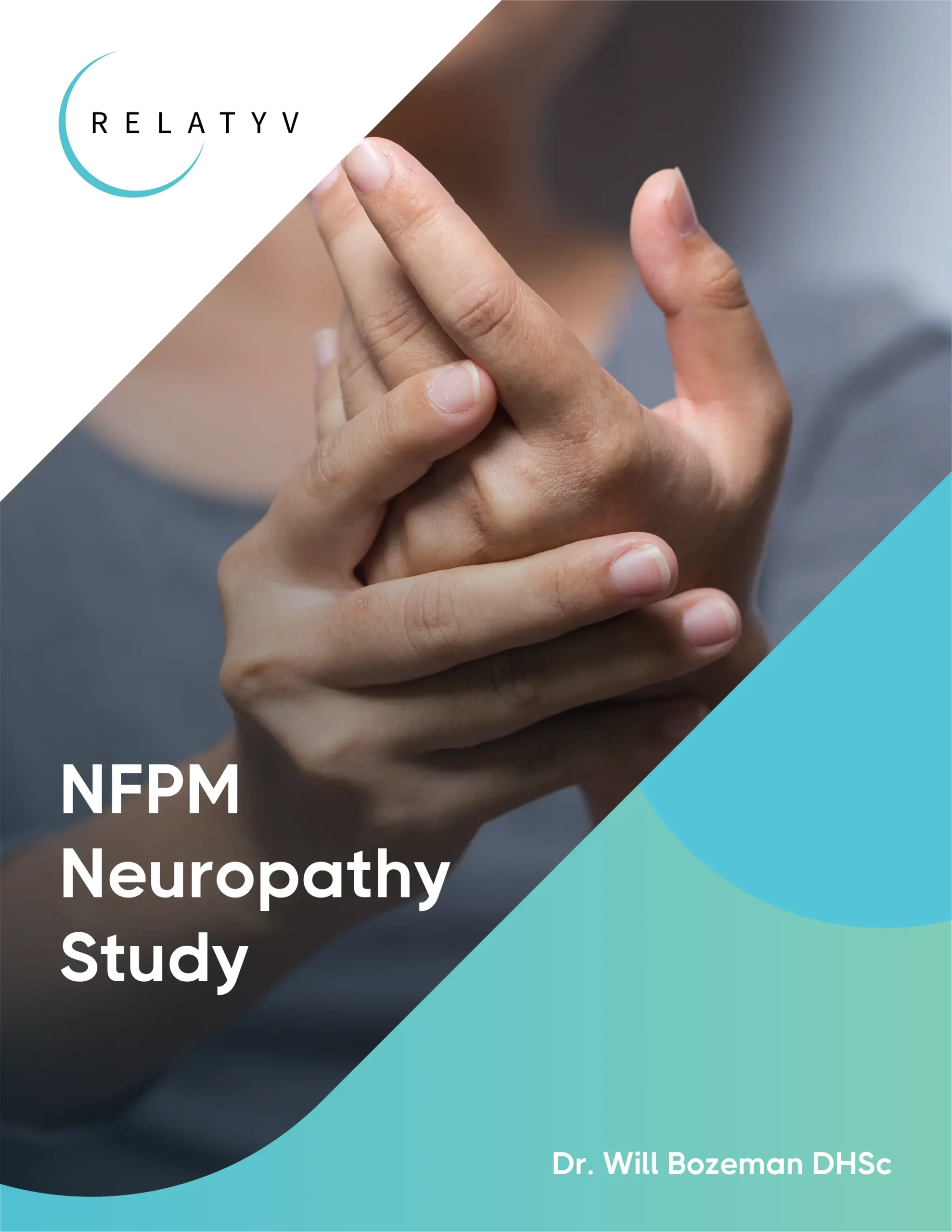Sciatica

Unraveling What Causes Sciatica And Buttock Pain
Read More
October 5, 2023
The relentless sensations of sciatic pain can cause even the simplest of tasks to become monumental challenges. Perhaps one of the most unpleasant aspects of having sciatica is the difficulty in getting a decent night’s sleep because of the persistent nerve pain. Many people wonder, “how to sleep with sciatic nerve pain?”
Consistently poor sleep over time may profoundly impact both your daily life and general well-being. It can have negative effects on many areas of your health, including your energy levels, immune function, mood regulation, and most importantly, your happiness.
Improving the quality of your sleep despite the ongoing nerve pain of sciatica can seem daunting. But don’t worry, we’re here to shed some light on this common symptom and share with you some practical advice that may help ease your pain.
With this article, we hope to provide valuable insights as to why sciatica can make sleeping such a challenge. We will then provide seven practical tips for getting better sleep while dealing with sciatic pain.
Additionally, we will share some effective home remedies for treating sciatic pain and the complex role of medications within a pain management approach. We’ll explore why it is important to find a safe and effective long-term strategy to manage the pain associated with sciatica so you can get the restful sleep you deserve.
Let’s begin by taking a look at how sciatica can make sleeping so difficult.
There are many varying factors that contribute to sleeping difficulties for people dealing with sciatic pain. These factors can range from the underlying cause and severity of sciatic pain through to your regular sleeping habits. Let’s explore a number of these factors further:
Sciatic pain originates from the lower back, where it then extends down through either side of the buttock and into the leg. This is often described as a sharp shooting pain or even a tingling, burning sensation. The pain is caused by irritation of the sciatic nerve, either from the spinal disc compressing the nerve or irritation from an underlying medical condition. Pain is commonly exacerbated when you lie down because the pressure on your lower back increases, making it difficult to find a comfortable sleeping position.
Some of the many underlying causes of sciatic pain include herniated discs, spinal stenosis, arthritis, and even muscle spasms. It is normal for painful medical conditions such as these to worsen during the night. You see, as we begin to relax, our circulation slows, which can reduce the body’s level of anti-inflammatory hormones like cortisol and raise inflammation. This can contribute to increased levels of pain and discomfort, ultimately interrupting sleep.
Having good spinal alignment while sleeping is important as it reduces muscle strain and imbalances. Sciatica can lead to a disruption of the spine’s alignment as muscle tension leads to additional nerve irritation and discomfort. Maintaining the right posture while sleeping is essential to alleviate pressure on the sciatic nerve and ease painful nerve signals.
Sleep hygiene describes the healthy habits and practices we can do before bedtime that promote healthy sleep. Unfortunately, sciatica sufferers can often struggle with maintaining healthy sleep hygiene due to increased levels of pain, discomfort, and perhaps a level of anxiety about sleep itself. However, addressing sleep hygiene and establishing a nighttime routine that’s effective for you could lead to better sleep quality as well as longer-lasting sleep.
These various factors can all contribute to poor sleep quality and fewer hours of sleep for individuals dealing with sciatica because they cause issues such as waking frequently, difficulty in finding a comfortable sleeping position, and persistent pain. Let’s now explore seven practical methods that could help enhance your sleep quality and guide you on how to sleep with sciatic nerve pain.
Now that we know why sleeping with sciatica is oftentimes challenging, let’s look at seven useful strategies that could help you reduce pain and discomfort enough so you can get a better night’s rest.
Let’s start with the foundations. Investing in a mattress that provides adequate support for the natural curvature of your spine will assist in reducing the pressure on your sciatic nerve, which may make a big difference. Typically, a mattress that feels medium to firm is best; ultra-soft mattresses typically do not provide enough support for proper spine alignment.
Placing pillows in strategically beneficial positions can also promote proper spinal alignment and ease discomfort. Try placing a pillow between your knees when sleeping on your side to reduce pressure on the lower back and hips.
Unfortunately for stomach sleepers, this position is associated with various muscle pains and discomfort in the neck and back, including lower back strain and sciatic nerve irritation. Sleeping on your back or side is generally more gentle on your muscles and can reduce strain, which can be especially beneficial for those with sciatica.
If changing your sleeping habits entirely is too much of a challenge, you can try placing a small towel or pillow under your lower abdomen and hips. This can help prevent the sagging of your lower back out of its neutral position for a more comfortable sleep.
Elevating your knees while you sleep may also reduce the pressure throughout your lower back and sciatic nerve. You can purchase specialized pillows or experiment with pillows of different sizes and positions to see what helps you find the best relief and comfort.
Gentle stretching exercises of the lower back and upper legs can relax tense muscles, improve your flexibility, and increase blood flow. Incorporating some short, simple movements before bedtime may help to loosen the area and ease sciatica-related muscle tension and discomfort.
A relaxing, warm bath before bed is a great way to ease tight muscles, improve circulation, and reduce nighttime sciatic pain. It also serves as a wonderful mindfulness exercise to help calm the mind, making it one of the great tools for developing positive sleep hygiene practices.
Having a consistent nighttime routine helps your body recognize that it is time to relax and wind down. Perhaps some of the above strategies, such as light stretching or taking a warm bath, would be a good place to start. Whatever you choose to incorporate into your routine, by regularly preparing your body for sleep, you can promote great improvements to your sleep quality, even if you have challenging sciatic pain.
Integrating some of these practical tips can make significant changes to how your sciatic pain affects your sleep, perhaps helping you finally find some quality rest and relief. Additionally, there are a number of easy remedies and techniques you can implement at home, which we will discuss in the next section.
Home remedies can be a simple way to get some additional relief from sciatic pain. Before going to bed, try some of these simple remedies to help you ease your discomfort and find quality sleep.
There are a number of different over-the-counter pain relief patches, such as those containing capsaicin or lidocaine. These patches can be applied directly to the lower back, where they aim to provide localized relief of sciatic pain.
Heat and ice therapy are timeless home remedies that remain a great way to ease swelling and discomfort. For sciatic pain, experiment with both hot and cold packs applied to the lower back to see which works best for you. Heat therapy aims to improve blood flow and relax tight muscles, whereas a cold pack will help numb the area, potentially reducing nerve-related pain.
Massage is another well-known therapy for reducing the pain brought on by tight muscles, as it helps promote relaxation. Unfortunately, visiting a massage therapist isn’t always convenient. However, the good news for us is that there is a growing variety of massage accessories available on the market.
For sciatic pain, consider using a massage accessory to gently relieve tension throughout the lower back, near the sciatic nerve. This can also be done before bedtime to help ease pain and improve your chances of a better night’s sleep. Some of the more common accessories we recommended could include a simple tennis ball, a spinal roller, and a massage gun.
While home remedies can be beneficial in relieving sciatic pain for many individuals, it’s common for some people to turn to pain-relieving medications. In the following section, we’ll discuss why medication may not always be the most suitable option for those seeking long-term relief from sciatic pain that is causing sleep disturbances.
Taking over-the-counter pain relievers can provide some temporary relief from sciatic pain. However, solely relying on pharmacological options may lead to detrimental long-term effects on your health.
One of the most common types of medications taken for sciatic nerve pain is non-steroidal-anti-inflammatories (NSAIDs), as they help to ease pain and reduce inflammation. However, NSAIDs have the potential to cause gastric upset, such as nausea and stomach pain. And when taken over long periods of time or in high doses, they can be seen to be associated with a number of health issues, such as peptic ulcers and renal dysfunction, particularly in older adults.
Additionally, some doctors may prescribe stronger pain relievers, such as oxycodone or hydrocodone. These medications are powerful analgesics that can help reduce pain and discomfort; however, they often leave individuals feeling drowsy or may interrupt a normal sleeping cycle. Taking opioid medications long-term or in high doses may also lead to dependency and potentially mask an underlying issue that is worsening.
It’s essential to consult with a healthcare professional for a comprehensive approach to pain management and to learn of all the options available to ensure you can make informed decisions about your pain management strategy. Let’s shift our focus and discuss some alternative approaches to sciatic pain that don’t involve medication.
Individuals suffering from chronic sciatic pain, including those with underlying medical conditions such as peripheral neuropathy, should consider exploring non-pharmaceutical and non-invasive treatment options such as Neurofunctional Pain Management (NFPM). This is an innovative approach that addresses the pain and inflammation associated with sciatica without the use of strong medications or surgery.
At Relatyv, we specialize in NFPM techniques that feature a uniquely designed protocol to provide a comprehensive, whole-person approach to pain management. Our approach aims to not only help you find relief from sciatic pain and improve your sleep but also enhance your general health and well-being. Read about how NFPM is one of the most innovative medical developments in pain management.
At Relatyv, we are dedicated to providing comprehensive care that can help you find relief from sciatic nerve pain with the help of our state-of-the-art innovative therapies.
We utilize a unique Neurofunctional Pain Management approach, offering non-pharmaceutical and non-surgical alternatives for effective and long-lasting relief from painful symptoms.
Our Relatyv protocol involves a powerful combination of electroanalgesia and IV hydration therapy. Both are specifically designed to reduce pain and inflammation and promote healing.
Electroanalgesia is a well-researched and innovative therapy that involves directing high-frequency electronic waves to the affected area. This is a painless procedure that not only reduces nerve pain at a cellular level but can also improve muscle function.
Additionally, electroanalgesia signals the release of naturally occurring endorphins, fostering long-lasting effects, leaving you feeling rejuvenated and enhancing your overall well-being.
Specially tailored IV hydration therapy sessions are also incorporated throughout our Relatyv protocol. This is a very effective way to directly administer nutrients, vitamins, and minerals into the body through the bloodstream. This aids in reducing inflammation and optimizing the body’s environment for healing and tissue repair.
At Relatyv, we strongly believe in encompassing a comprehensive whole-person approach to health care, which is why we also provide lifestyle counseling. We understand that managing sciatic nerve pain and its associated sleep disturbances involves more than just addressing physical pain.
We provide specialized guidance on improving your overall physical health and well-being, including strategies for enhancing your sleep hygiene to magnify your quality of life.
Sciatic pain can significantly impact your quality of life, where finding restful sleep becomes a nightly challenge. The good news is that implementing some of our top seven tips and exploring specific at-home remedies close to bedtime can help improve your comfort and lead you toward better sleep hygiene for a more restful night’s sleep.
For those who are struggling with relentless sciatic pain, medications such as NSAIDs can be beneficial for a short-term fix. However, it is important to be aware of the potentially negative health effects of long-term use.
To find relief from relentless sciatic pain, explore the comprehensive pain management solutions at Relatyv. NFPM is an innovative treatment method that specifically targets the pain and inflammation associated with sciatica, aiming to reduce discomfort and improve sleep quality, ultimately enhancing your overall quality of life.
Contact us today to learn more about Neurofunctional Pain Management and how we can assist you in your journey to a pain-free sleep.
About the Author
Will is a healthcare executive, innovator, entrepreneur, inventor, and writer with a wide range of experience in the medical field. Will has multiple degrees in a wide range of subjects that give depth to his capability as an entrepreneur and capacity to operate as an innovative healthcare executive.
Share on Social Media




You can see how this popup was set up in our step-by-step guide: https://wppopupmaker.com/guides/auto-opening-announcement-popups/
You can see how this popup was set up in our step-by-step guide: https://wppopupmaker.com/guides/auto-opening-announcement-popups/
Neurofunctional Pain Management Overview
IV Therapy
Symptoms
Conditions Treated
Treatments
Articles by Category
Locations
Colorado
Wisconsin
Georgia
Hiram
Lawrenceville
Marietta
Powder Springs
Texas
Waco
Victoria
Illinois
Buffalo Grove
New Lenox
St. Charles
Arizona
Tucson
Waddell
Arlington
Avondale
Buckeye
Superior
Mesa
Palo Verde
Morristown
Tempe
Chandler
Anthem
Eloy
Florence
Fort McDowell
Phoenix
El Mirage
Coolidge
Gilbert
Arizona City
Casa Grande
Casa Blanca
Aguila
Sacaton
Apache Junction
Kearny
Stanfield
Goodyear
Litchfield Park
Alabama
Arkansas
California
Florida
Idaho
Louisiana
Michigan
Rhode Island
Minnesota
Nevada
New Jersey
New Mexico
North Carolina
Ohio
Pennsylvania
South Dakota
Tennessee
Virginia
Washington

